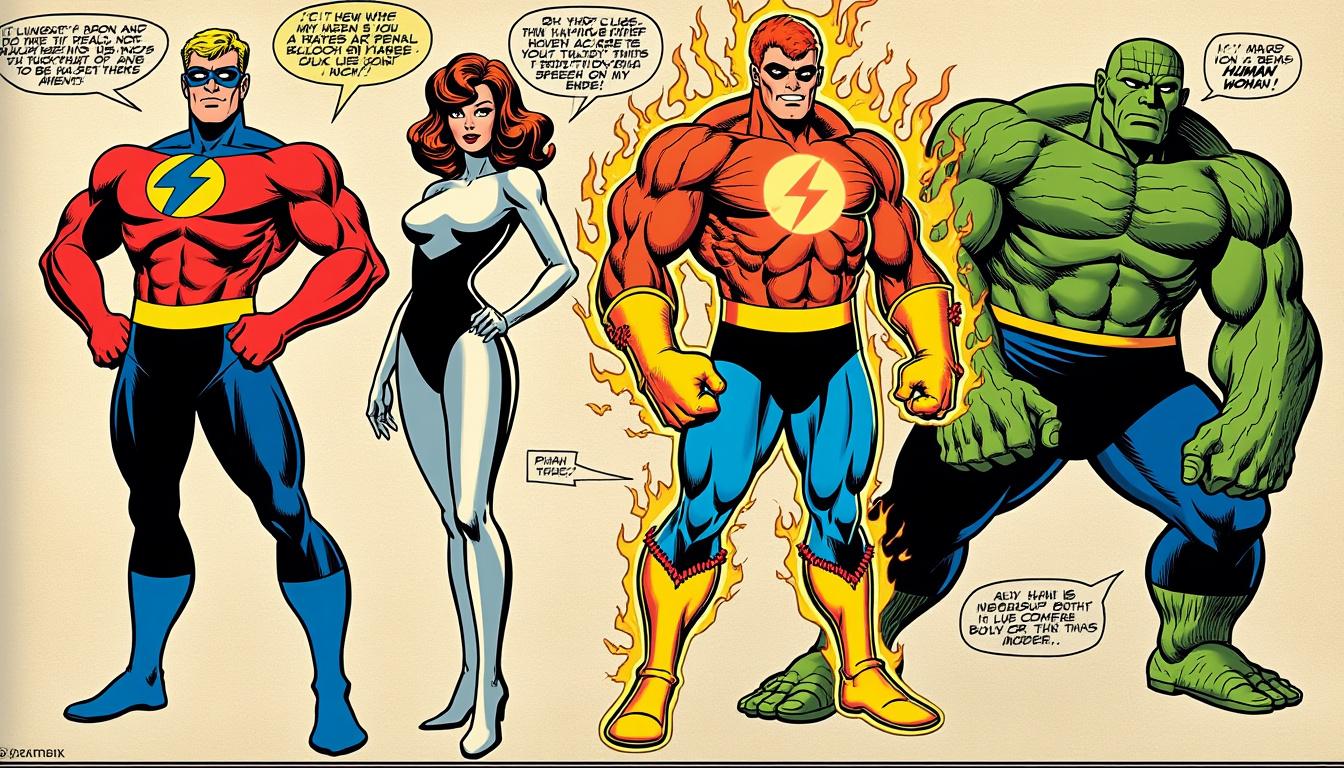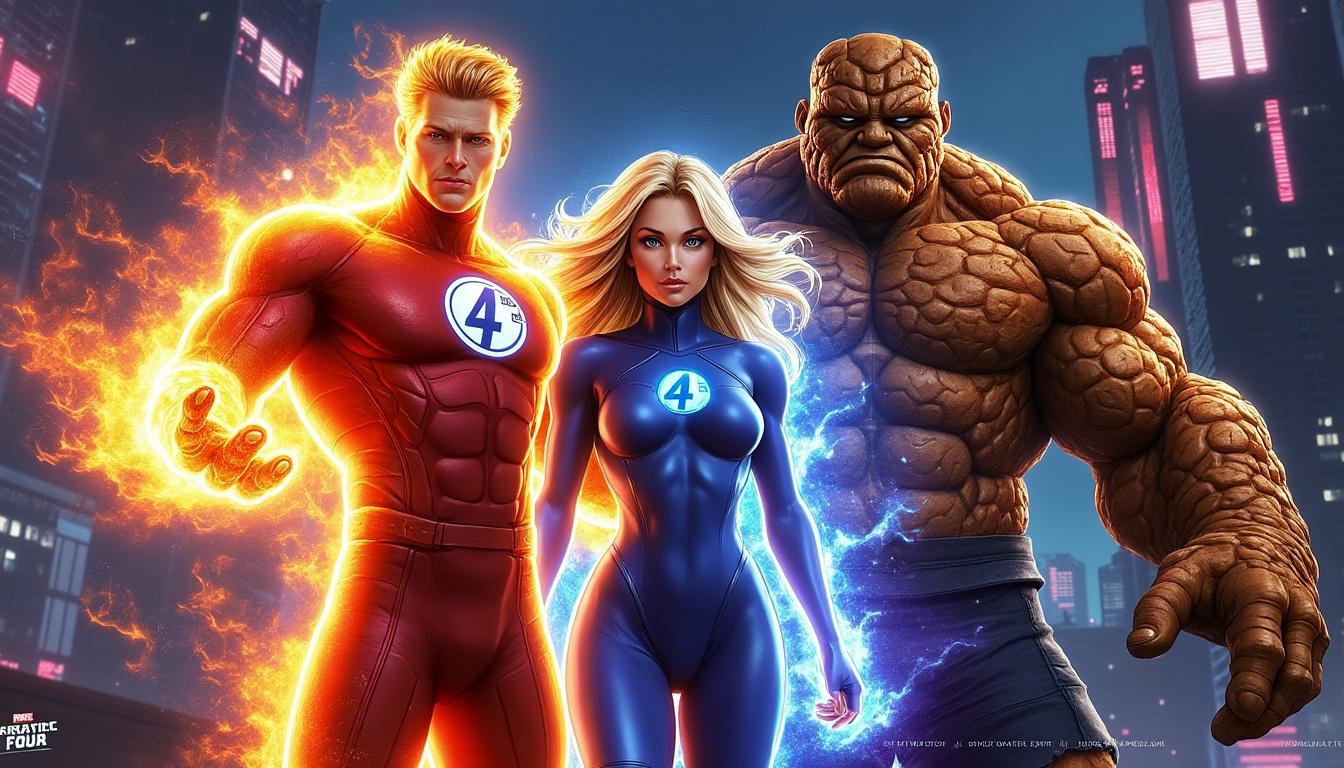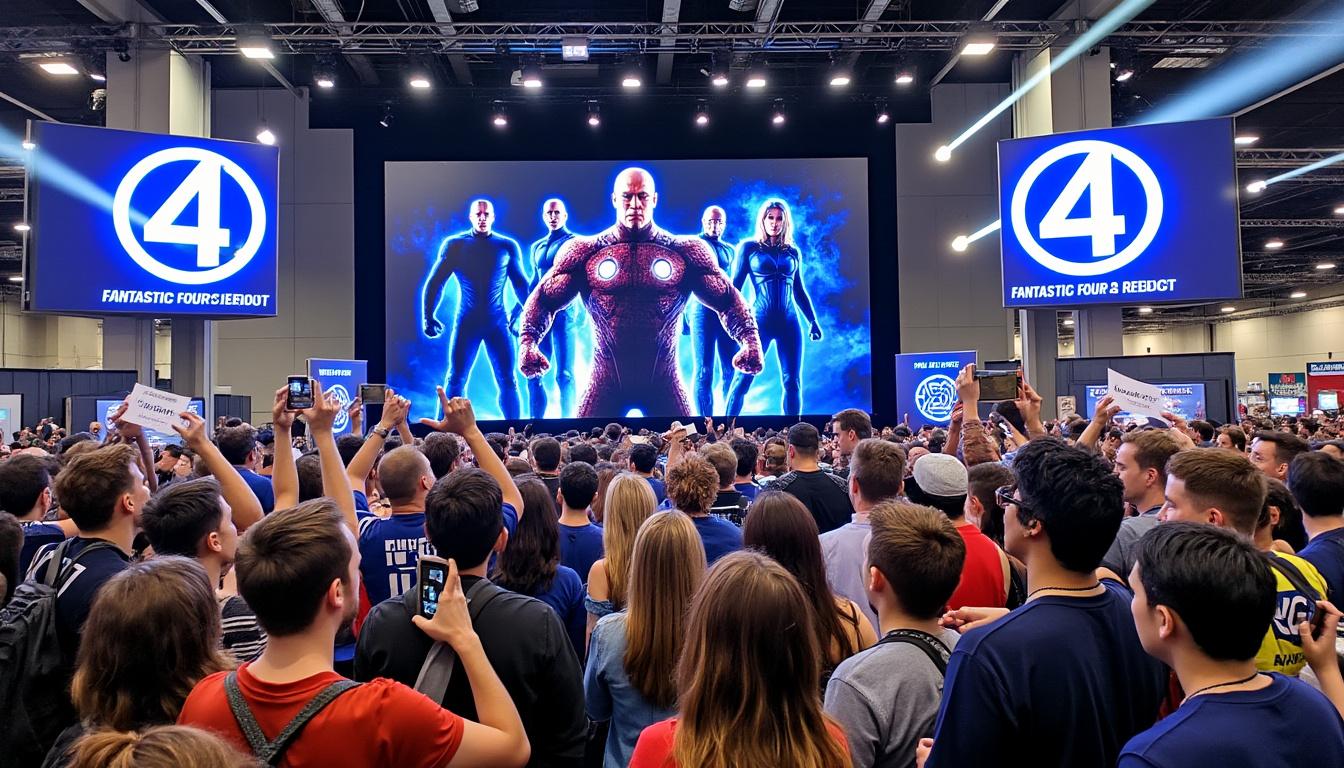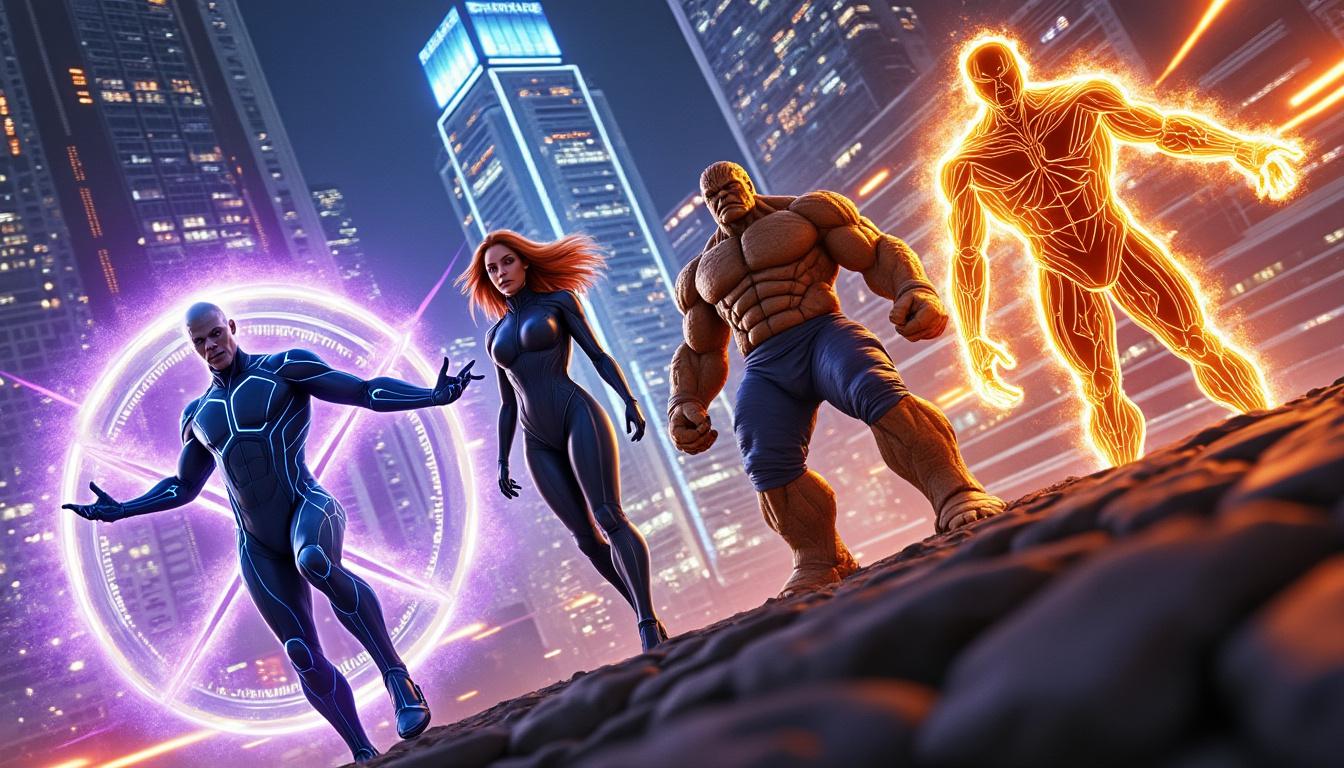The visual evolution of the Fantastic Four’s costumes within the Marvel Cinematic Universe (MCU) represents an intersection of nostalgia and forward-thinking design that resonates with audiences of all ages. With the world eagerly awaiting the cinematic debut of “The Fantastic Four: First Steps,” the unveiling of concept art showcases how the iconic team of heroes could have donned a fresh yet familiar aesthetic. This exploration of costume design dives into the artistic process, the historical influences, and significance behind these iconic outfits, setting the scene for a nostalgic yet novel approach to Marvel’s First Family.
The Artistic Vision Behind the Costumes
The journey of costume design in cinema often begins with a convergence of ideas, where artistic vision meets practical considerations. In the case of “The Fantastic Four: First Steps,” Marvel Studios has tapped into the talents of renowned concept artist Ryan Meinerding, who is known for his innovative designs across the MCU. His approach for the costumes reflects a deep respect for the original comic book aesthetics while integrating a contemporary flair.
Meinerding revealed that the inspiration behind the costumes draws from various sources, particularly retro sci-fi aesthetics. These influences resonate not just with comic fans but also evoke a sense of nostalgia for a bygone era of design. The early drafts featured costumes that echoed the vintage styles of the 1960s—a clever alignment with the film’s setting in a retro-futuristic world. This decision reflects a broader trend in the MCU, where filmmakers integrate aspects of history into the narrative, creating a visually cohesive environment.
Incorporating Classic Elements
One of the standout features of the new designs lies in their homage to the legendary Jack Kirby, the co-creator of the Fantastic Four. Kirby’s bold lines and imaginative styles have influenced generations of artists, and his mark can be seen in the tailored details of the suits. The implementation of Kirby’s essence brings authenticity to the designs while allowing new interpretations to flourish.
The essential components of design are color, texture, and functionality, all of which play a significant role in the overall aesthetic. The classic blue and white versions of the costumes are juxtaposed with modern material technology, implying advanced capabilities reflective of the characters’ powers. Particularly with characters like Reed Richards, whose intellect allows him to invent sophisticated gadgets, the tailoring of the costume suggests functionality without sacrificing style. The costumes are not merely fabric; they embody the heroes’ identities.
- Key Aspects of Costume Design:
- Combination of vintage styles with modern functionality
- Tribute to Jack Kirby’s visual legacy
- Attention to color and texture as indicative of character traits
- Combination of vintage styles with modern functionality
- Tribute to Jack Kirby’s visual legacy
- Attention to color and texture as indicative of character traits

Character-Specific Designs: Defining Individuality
Every character within the Fantastic Four has distinct traits and abilities, which the costume designs leverage to amplify their individual narratives. For instance, the variations intended for Sue Storm, known as the Invisible Woman, could reflect her duality as both a powerful hero and a relatable woman navigating her identity. Designers explore options that combine elements of elegance and empowerment, embodying her character’s strength in a non-traditional manner.
Moreover, the design choices for Johnny Storm, the Human Torch, are meant to highlight his fiery personality. The incorporation of accents that suggest motion—maybe even structural elements that mimic flames—could visually communicate his dynamic nature. These intentional design methods serve as visual storytelling devices, enhancing the audience’s understanding of the character beyond just dialogue and action.
Collective Aesthetic vs. Individual Identity
While the costumes are rooted in a collective aesthetic, ensuring the team feels united in their visual presentation, there should be enough distinctions to allow characters to stand apart. This balance between group cohesiveness and individual identities is essential, particularly considering the dynamic within the team. The push for design variation is not solely about colors; it extends to features like shoulder designs, emblems, and technological accents that resonate with each character’s background.
Community Reactions and Nostalgia
The initial release of concept art has sparked significant enthusiasm within the fan community, illustrating the power of nostalgia woven through modern storytelling. Fans of the original comics and earlier adaptations have expressed excitement at the decision to maintain classic elements while breathing new life into the costumes. This balance allows both long-time followers and new viewers to engage with the series on various levels.
Social media platforms buzz with discussions, theories, and hopes regarding the film. Various artists and fans have engaged in recreating and imagining their unique versions of the Fantastic Four’s costumes, a testament to the significant cultural impact of the franchise. The transformative nature of these designs plays a crucial role in reconnecting audiences with their fond memories while inviting them into the epic narrative Marvel is crafting.
The Role of Merchandise in Expanding the Universe
The anticipation around the Fantastic Four costumes extends beyond the architectural realm of cinema. Prominent companies like Hasbro, Funko, and LEGO are poised to create merchandise that encapsulates these designs. This line of merchandise will not only cater to collectors but also reflects the broader cultural significance of superhero narratives in today’s society.
- Upcoming Merchandise:
- Action figures from Hasbro
- Funko Pop! collectibles featuring the new designs
- LEGO sets that recreate iconic scenes from the film
- Action figures from Hasbro
- Funko Pop! collectibles featuring the new designs
- LEGO sets that recreate iconic scenes from the film

Evolution of the Fantastic Four’s Costumes Through the Ages
The journey of the Fantastic Four’s costumes transcends just the upcoming designs in the MCU. Historically, the aesthetics of this beloved team have undergone substantial transformations since their inception in the 1960s. The original designs reflected the cultural zeitgeist of the time, with Barry Allen’s superhero costumes pushing the envelope on what could be expected of comic book attire.
With each iteration, different artists and filmmakers have redefined the team’s look, seeking to resonate with contemporary audiences while honoring the origins. The overall evolution encapsulates changing trends, such as the 1990s television adaptations, where costumes appeared exaggerated and colorful, to 2005’s live-action films which attempted a more modern approach, albeit received mixed reviews.
A Comparative Look at Historical Designs
Different iterations in the costume history can be categorized into distinct eras, highlighting the thematic shifts occurring throughout the characters’ adaptations.
| Era | Signature Look | Cultural Influence |
|---|---|---|
| 1960s | Classic blue jumpsuits with white accents | Pop culture and space-age aesthetics |
| 1990s | Bright colors and exaggerated designs | Comic book renaissance and animated adaptations |
| 2005 Films | Streamlined looks, more tactical gear | Post-9/11 cultural landscape and maturity of superhero genre |
| 2020s MCU | Retro-futuristic with modernizations | Blend of past and future aesthetics |
Anticipating the Impact of The Fantastic Four: First Steps
As fans prepare for the release of “The Fantastic Four: First Steps,” the expectation surrounding the costume designs serves as a microcosm for the larger narrative journey that is about to unfold. These heroic outfits symbolize more than just fiber and design—they represent an enduring legacy that connects past, present, and future generations of fans. With the costumes acting as a bridge to the comics, the film’s success could reinvigorate interest in the Fantastic Four franchise, leading to further explorations of these characters within the MCU.
In an age where film and television continuously redefine character representation, the choices made in the costume design become increasingly significant. The hope is that these costumes will not just look good on screen but will encapsulate the spirit of the characters and the themes of family, heroism, and the exploration of the unknown.
- Potential Themes Explored in the Film:
- The dynamics of family and teamwork
- The balance of personal identity and heroism
- Exploration of scientific advances and ethical dilemmas
- The dynamics of family and teamwork
- The balance of personal identity and heroism
- Exploration of scientific advances and ethical dilemmas



